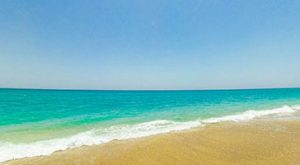Protecting Our Reefs
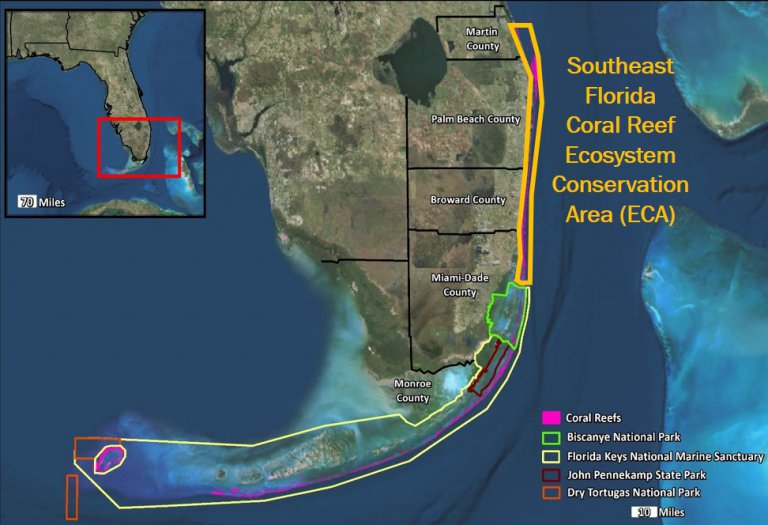
We can all take part in reef conservation!
Whether you are snorkeling, diving, fishing, eating local seafood or staying in a beach front hotel, coral reefs are responsible for many of the things we enjoy while traveling to Martin County.
But, you don’t have to be in the water to help protect our reefs. Below you can learn about the different ways in which you can contribute to the health and resilience of of our reefs!
Reef Safe Sunscreen
This article by the Coral Reef Alliance discusses the negative impacts that certain chemicals in sunscreen have on our reef system, notable Oxybenzone and Octinoxate.
As an alternative, the article below lists the top 10 reef-safe sunscreens in 2023. Many mentioned are sold in our locally owned surf and paddle shops, so look for them when you are shopping!
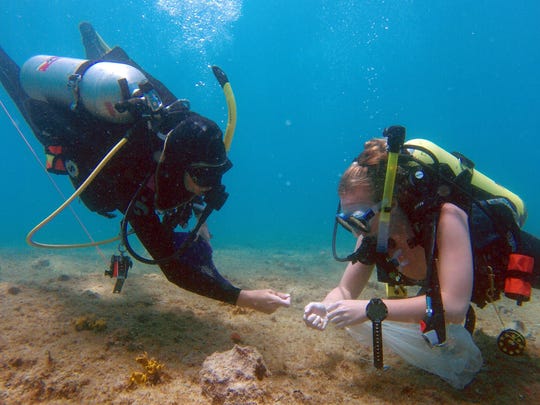
Snorkeling and Diving
- To avoid damage, make sure to not kick, touch, or stand on coral.
- Practice safe buoyancy control while diving
- Avoid crowded dive sites to reduce diving pressure on the area.
Fishing
- Don’t forget to check and abide by Florida Fish and Wildlife fishing rules and regulations and download the Fish Rules App for quick access while out on the water.
- Reel in and recycle! Don’t leave your line behind and make sure to properly dispose of it on shore.
- When buying or eating seafood, ensure that it is sustainable and responsibly harvested.
Boating
- Please do not drop anchor on the reef and instead, find a spot up current of the reef in sandy areas.
- When available, use mooring buoys.
- Boats can be disease vectors and transplant exotic species. Wash your boat thoroughly, including the bilge, before traveling from one area to the next.
- Pay close attention to water depth to avoid propeller strikes on the reef
Wildlife
- Plastic pollution and other marine debris harm marine wildlife. Please limit your use of single-use plastics and make sure to dispose of your trash responsibly.
- The reef is home to a variety of wildlife including sea turtles, so please watch your speed and keep an eye out
- Always keep your distance from marine mammals, such as dolphins, as it is federal law. Read here for more details.
Report to the Southeast Florida Action Network
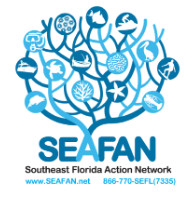
You can help our offshore habitats and wildlife by reporting things such as marine debris or pollution; vessel groundings; anchor damage; invasive species; harmful algae blooms; fish disease or kills; discolored water and coral disease or bleaching. This can easily be done through the Southeast Florida Action Network (SEAFAN), a citizen reporting system.
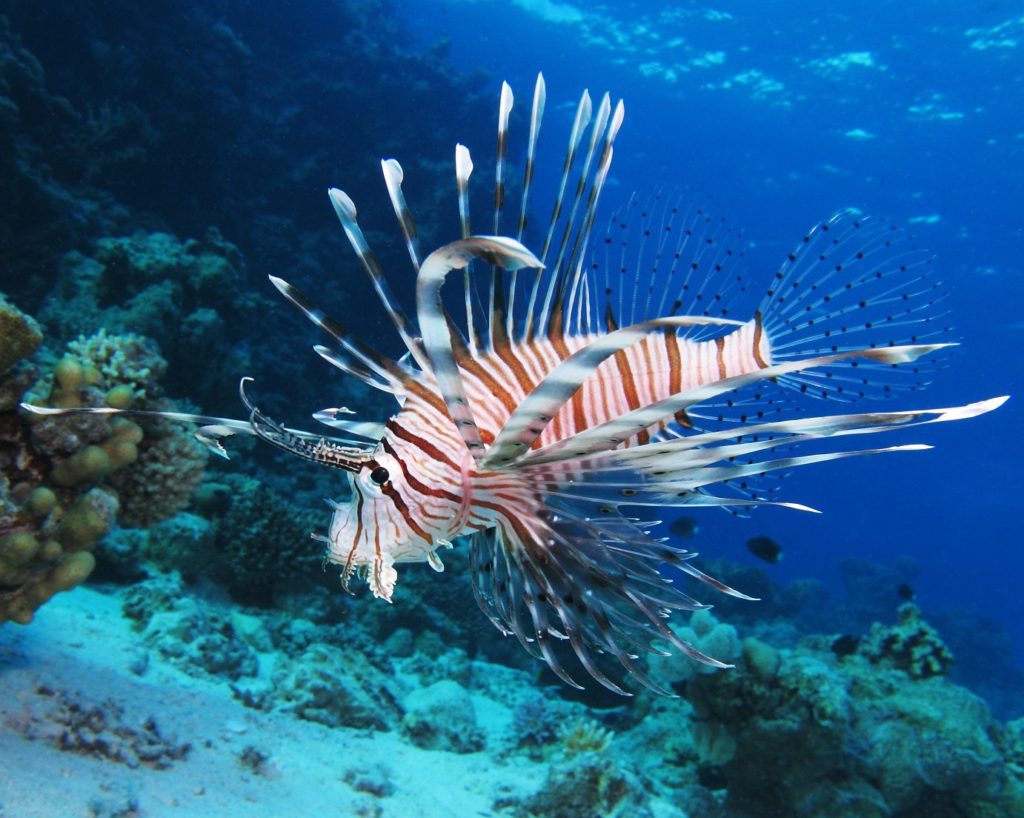
Invasive Lionfish
The highly invasive lionfish is here to stay in our Atlantic coastal ecosystems and Martin County is no exception. Despite their venomous spines, they are a delicious fish to eat and many local divers and fishers help to get them on restaurant plates. To learn more, click here and never hesitate to ask about how you can help at any local dive shop! Whether you are an avid diver and spear fisher or you like to snorkel and just want to report seeing one, it all makes a difference!
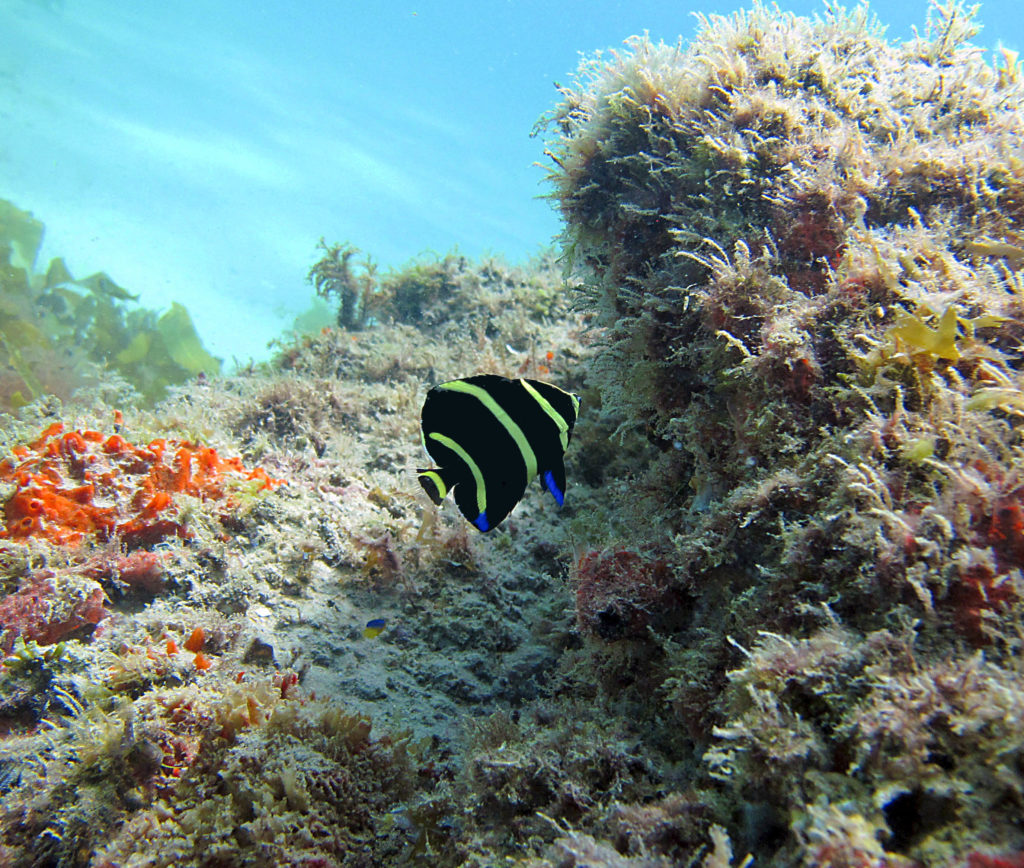
Stay Informed
For more information regarding reef conservation, check out our Protect Our Paradise website
COMMON QUESTIONS
Coral reefs are valuable natural resources. They protect our coasts by reducing wave energy from storms and hurricanes. They serve as a source of food and shelter and provide critical habitat for numerous species, including commercially important fisheries. Many medicines as well as other health and beauty products are derived from marine plants, algae and animals found on coral reefs
We are aware of the extreme stress Florida’s coral reefs are facing, and that their weakened state has allowed a very concerning disease outbreak to occur. We are lucky to have highly qualified scientists and world renowned coral reef research institutions in our region to help address this issue. This meeting of the US Coral Reef Task Force could not come at a better time to bring together the leaders in coral reef strategies, partnerships and on-the-ground action to conserve coral reefs and shine a light on our local issue. The State of Florida has also stepped forward with $1M in funding to advance coral reef science and better understand this destructive coral reef disease. Locally, the 5 southeastern Florida counties (Monroe, Miami-Dade, Broward, Palm Beach and Martin) benefitting from coral reefs along their shore have banded together in programs like the “Coral Reef Ambassadors” which provides actions that each individual – resident or tourist – can take to safeguard our precious resource. Behind the scenes, the 5 counties have staff and elected officials constantly focused on opportunities to leverage funds and move programs forward.
The 5 southeastern Florida counties (Monroe, Miami-Dade, Broward, Palm Beach and Martin) have banded together as “Coral Reef Ambassadors.” Follow the conservation recommendations listed on this website to help safeguard our precious resource.
Get involved with the organizations fighting to protect our natural resources.
Florida Department of Environmental Protection Coral Reef Conservation Program and Friends of Our Florida Reef all have ways you can get involved.
The Florida Reef Resilience Program (FRRP) is the largest coordinated coral condition monitoring program in the world. It is a truly collaborative effort bringing together more than a dozen federal and state agencies, nonprofit organizations, and university partners*, to improve and sustain the health of Florida’s coral reefs and the industries that depend on them. The FRRP has a unique history, growing from a program to encourage knowledge and best practices sharing between the managers of the renowned Great Barrier Reef and stakeholders of the Florida Reef System.
FRRP’s stewardship of the Florida Reef System includes work to identify and track the health and status of coral reefs, understand underlying factors that lead to and maintain resilience, and inform efforts to reduce negative impacts and stressors on reefs. Throughout FRRP’s history, partners have successfully worked together in four main program areas: Disturbance Response Monitoring, Human Dimensions of Reef Resilience, Communications and Outreach, and Supporting Coral Reef Management and Sustainable Uses.
Florida is exemplary in terms of marine managed areas and hosts one of the first designated marine protected areas in the world, John Pennekamp Coral Reef State Park established in 1963.
In addition, many of Florida’s coral reefs are protected and managed within the Florida Keys National Marine Sanctuary, Dry Tortugas National Park and Biscayne National Park, John U. Lloyd Beach State Park, St. Lucie Inlet Preserve State Park, and four coastal National Wildlife Refuges in the five county region—Great White Heron, Key West, National Key Deer, and Hobe Sound.
Most of the reefs of the northern extension of the Florida Reef System, from the northern border of Biscayne National Park in Miami-Dade County to the St. Lucie Inlet in Martin County, are overseen by the Florida Department of Environmental Protection’s Coral Reef Conservation Program which is developing new management strategies for the region through the Southeast Florida Coral Reef Initiative.
Florida’s Coral Reef Conservation Program coordinates research and monitoring, develops management strategies, and promotes partnerships to protect the coral reefs, hard-bottom communities, and associated reef resources of southeast Florida. CRCP leads the implementation of the Southeast Florida Coral Reef Initiative. Visit us on the web at: http://www.dep.state.fl.us/coastal/programs/coral.
The northern section of the Florida Reef Tract, part of the only coral reef ecosystem in the continental United States, is co-managed by the Florida Department of Environmental Protection’s Coral Reef Conservation Program (FDEP CRCP). The region of focus stretches over 100 miles from the northern boundary of Biscayne National Park in Miami-Dade County, northward to the Port St. Lucie Inlet in Martin County.
This vibrant and ancient natural resource and marine wildlife habitat provides popular recreation and tourism options including stellar beaches, fishing, boating, snorkeling and diving. Moreover, the Florida Reef Tract supports the regional economy and greater good by providing delicious seafood to millions of people in Florida and beyond, while naturally protecting vital shoreline real estate, marinas, and strategic warm-water ports from ocean wave action and storm surge.
Although the Florida Reef Tract has been living prosperously for millennia, in many spots within swimming distance from the shore, it is under threat from many modern human-induced stressors, including but not limited to: residential and industrial land-based sources of pollution, over-fishing, coastal construction, and vessel and anchoring impacts. Combined with various global stressors, these activities have a cumulative negative effect on Florida’s unique natural (and national) treasure. Fortunately, critical steps are being taken by the FDEP CRCP and other organizations to ensure healthy reefs for the 21st Century and beyond.
Thank You!
Tourism is a vital industry in Martin County and we urge you to stand together with us in helping support our local businesses.






